
This year the Winter Solstice will fall on Monday, Dec. 21st
This astronomical event is the time when the Earth’s north pole is tilted farthest from the sun, so that here in the northern hemisphere, night is the longest and daylight is the shortest. This day has long been celebrated because it signals the reversal of the trend, with days lengthening until Summer Solstice. So even though there is a lot of winter left, there will be more day light. It is the promise of rebirth, of Spring to come.
Peoples through different times and cultures have seen this event as a moment of rebirth and hope. [Read More]

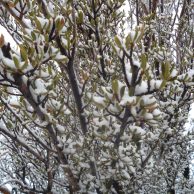 Attractive Evergreens for Colorado Gardens
Attractive Evergreens for Colorado Gardens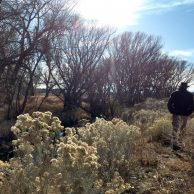
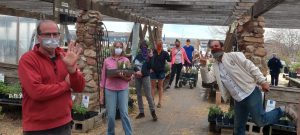
 We’ve heard from some of you that your trip to Harlequin’s for holiday gifts was your first foray into shopping since the COVID precautions began! This is such a strong affirmation that we are offering something of real value and importance to you, and we are honored to have this level of support!
We’ve heard from some of you that your trip to Harlequin’s for holiday gifts was your first foray into shopping since the COVID precautions began! This is such a strong affirmation that we are offering something of real value and importance to you, and we are honored to have this level of support!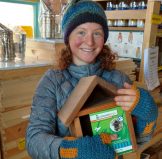 If you were lucky enough to get any mason bees nesting this spring, you’ll want to coddle them through the winter. Their populations are down throughout Boulder County because of the weather, and Tom Theobald, our usual supplier, isn’t even sure whether he’ll have any for sale next spring.
If you were lucky enough to get any mason bees nesting this spring, you’ll want to coddle them through the winter. Their populations are down throughout Boulder County because of the weather, and Tom Theobald, our usual supplier, isn’t even sure whether he’ll have any for sale next spring.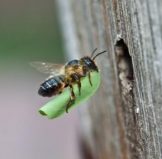 You can do the same with leaf cutter bees but handle them very carefully as they aren’t yet mature. Our supplier, Crown Bees, will be
You can do the same with leaf cutter bees but handle them very carefully as they aren’t yet mature. Our supplier, Crown Bees, will be 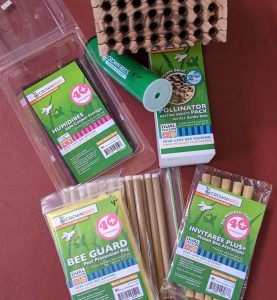
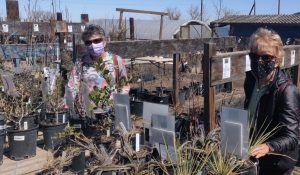 MARCH
MARCH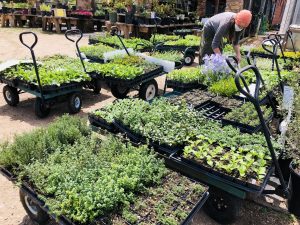 AUGUST 23 thru 29th
AUGUST 23 thru 29th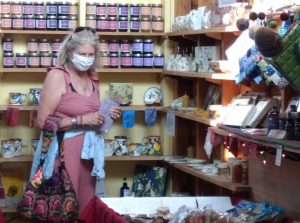 OCTOBER 1st
OCTOBER 1st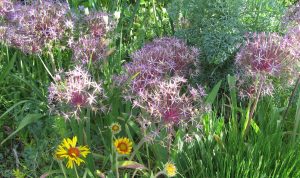
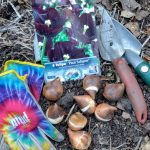

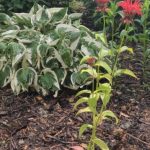
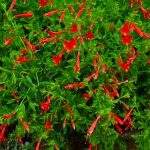
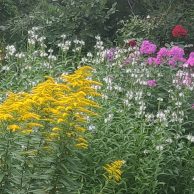 This is the perfect time to feed your roses, perennials, and lawn using a slow release organic fertilizer. This type of fertilizer won’t push undue growth now, but instead help your plants prepare for next spring. We recommend Mile High Rose Feed for your roses, Alpha One Fertilizer for your perennials, and Nature’s Cycle Organic Lawn Fertilizer for your turf.
This is the perfect time to feed your roses, perennials, and lawn using a slow release organic fertilizer. This type of fertilizer won’t push undue growth now, but instead help your plants prepare for next spring. We recommend Mile High Rose Feed for your roses, Alpha One Fertilizer for your perennials, and Nature’s Cycle Organic Lawn Fertilizer for your turf.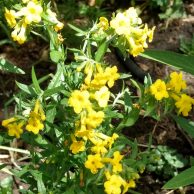 On our hikes, it seems we’re often exclaiming, “What a beautiful plant combination!”. Mother Nature’s inherent beauty and functional placement provide an amazing guide and inspiration for what we can create in our home garden or ecosystem. Mother Nature also helps guide us on how we can best support our pollinators.
On our hikes, it seems we’re often exclaiming, “What a beautiful plant combination!”. Mother Nature’s inherent beauty and functional placement provide an amazing guide and inspiration for what we can create in our home garden or ecosystem. Mother Nature also helps guide us on how we can best support our pollinators.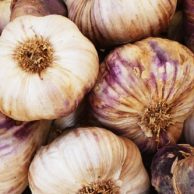 It’s time to buy your ‘seed’ garlic, which you should store in a cool, dry, well-ventilated place until planting time, from mid-October to mid-November. Seed garlic bulbs are specifically chosen for planting because they are the healthiest bulbs with the largest cloves, and they are intact. By planting the largest cloves, you’ll be rewarded with a harvest of big, juicy bulbs.
It’s time to buy your ‘seed’ garlic, which you should store in a cool, dry, well-ventilated place until planting time, from mid-October to mid-November. Seed garlic bulbs are specifically chosen for planting because they are the healthiest bulbs with the largest cloves, and they are intact. By planting the largest cloves, you’ll be rewarded with a harvest of big, juicy bulbs.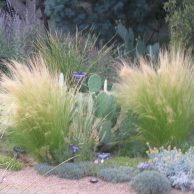
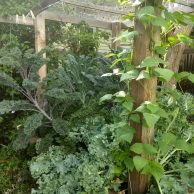
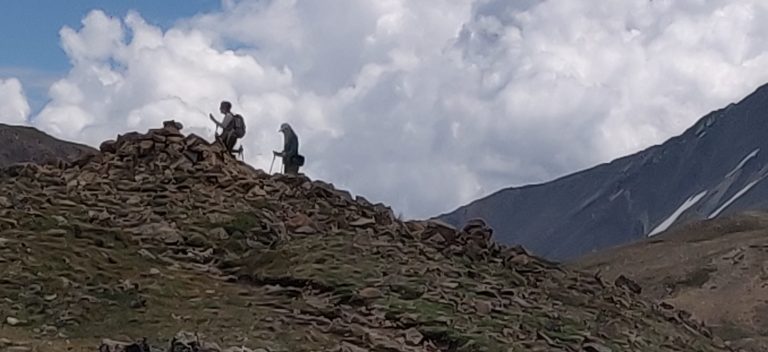
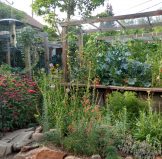 How to maximize your output
How to maximize your output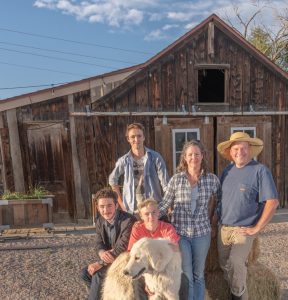
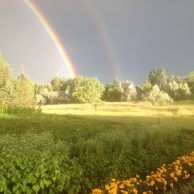 We have a once in a lifetime opportunity to protect one of the most unique parcels of land in Boulder in a way that would have lasting impact on the community for generations to come. In 2014, Boulder native Timothy Francis and his wife, Kerry, broke ground on a half-acre garden called Dharma’s Garden—named after a deer who was born where the garden now stands. Their nonprofit was founded to pursue the greater vision of the whole five-acre property as a fully integrated educational farm and homestead.
We have a once in a lifetime opportunity to protect one of the most unique parcels of land in Boulder in a way that would have lasting impact on the community for generations to come. In 2014, Boulder native Timothy Francis and his wife, Kerry, broke ground on a half-acre garden called Dharma’s Garden—named after a deer who was born where the garden now stands. Their nonprofit was founded to pursue the greater vision of the whole five-acre property as a fully integrated educational farm and homestead.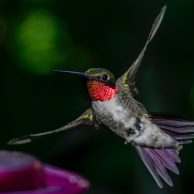 Hummingbirds are zipping and humming and sipping around our gardens, partaking of the summer’s bounty of nectar-rich flowers, many of which are ‘color-coded’ specifically to attract them. And you’ll want hummers in your garden, not only because they’re beautiful, not only because some plants depend on them for pollination, not only because migratory birds are imperiled, but also because they eat prodigious numbers of small flying insects like mosquitoes! And did you know, some hummingbird have been known to live up to 25 years!
Hummingbirds are zipping and humming and sipping around our gardens, partaking of the summer’s bounty of nectar-rich flowers, many of which are ‘color-coded’ specifically to attract them. And you’ll want hummers in your garden, not only because they’re beautiful, not only because some plants depend on them for pollination, not only because migratory birds are imperiled, but also because they eat prodigious numbers of small flying insects like mosquitoes! And did you know, some hummingbird have been known to live up to 25 years!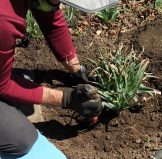
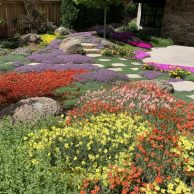 For over a quarter century Harlequin’s Gardens has shared plants, Eco-products, and advice for organic methods of gardening with our community. We are proud of the success so many have had and have wanted to share their results! So, we’ve created Harlequin’s Virtual Garden Tour for our community to share not just photos of their gardens but also a little about gardening goals, styles and experiences–especially sustainable approaches.
For over a quarter century Harlequin’s Gardens has shared plants, Eco-products, and advice for organic methods of gardening with our community. We are proud of the success so many have had and have wanted to share their results! So, we’ve created Harlequin’s Virtual Garden Tour for our community to share not just photos of their gardens but also a little about gardening goals, styles and experiences–especially sustainable approaches. 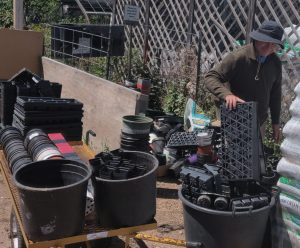
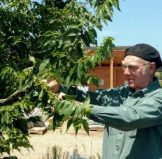 All spring we have been advising you not to prune out branches without leaves yet. After last October’s flash freeze and this March’s freeze of the new leaves, it was important to give shrubs, trees and roses time for a second set of leaves to come out before removing wood. By now we should be seeing new green leaves forming if the wood is still alive.
All spring we have been advising you not to prune out branches without leaves yet. After last October’s flash freeze and this March’s freeze of the new leaves, it was important to give shrubs, trees and roses time for a second set of leaves to come out before removing wood. By now we should be seeing new green leaves forming if the wood is still alive.
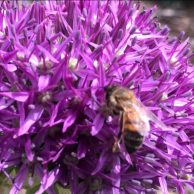 Pollinator week is a special time for Harlequin’s Gardens – a time when we can celebrate the hard-work of bees (honeybees, solitary bees, bumblebees) wasps, ants, flies and bee flies, butterflies and moths, beetles, some bats and birds, and some mammals. They’re all around us, connecting the dots between flowers and food.
Pollinator week is a special time for Harlequin’s Gardens – a time when we can celebrate the hard-work of bees (honeybees, solitary bees, bumblebees) wasps, ants, flies and bee flies, butterflies and moths, beetles, some bats and birds, and some mammals. They’re all around us, connecting the dots between flowers and food.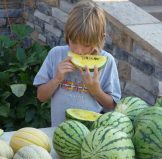 Do you love the sweet fruits and vegetables of late summer as much as we do? Well then, PLANT THEM NOW! We’ve got the heat now, which they thrive on. To develop those natural sugars, these crops take more time to mature than many other veggies, mostly between 70 and 100 days from seeding. We’ve saved you some time by growing starts, LOTS of them, and most of the varieties we’ve chosen will mature relatively early.
Do you love the sweet fruits and vegetables of late summer as much as we do? Well then, PLANT THEM NOW! We’ve got the heat now, which they thrive on. To develop those natural sugars, these crops take more time to mature than many other veggies, mostly between 70 and 100 days from seeding. We’ve saved you some time by growing starts, LOTS of them, and most of the varieties we’ve chosen will mature relatively early. In October of 2018, we were asked by the
In October of 2018, we were asked by the 
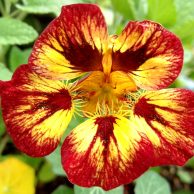 Incorporating edible flowers in your cuisine not only adds visual appeal, but also can offer high nutritional value and great flavors. Edible flowers have been used for millennia in many cultures to enhance everything from salad to beer and wine. A quick internet query on “ancient edible flower recipes” revealed many results. It could be a fun family event to recreate a heritage recipe!
Incorporating edible flowers in your cuisine not only adds visual appeal, but also can offer high nutritional value and great flavors. Edible flowers have been used for millennia in many cultures to enhance everything from salad to beer and wine. A quick internet query on “ancient edible flower recipes” revealed many results. It could be a fun family event to recreate a heritage recipe!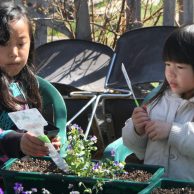
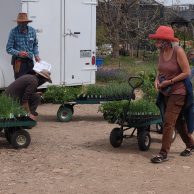 Meet our Staff!
Meet our Staff!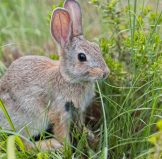 Have you found that rabbits are becoming more rampant?
Have you found that rabbits are becoming more rampant? Many odor repellents can be helpful, including our non-toxic Plantskyyd (in liquid and pellet forms), and Bobbex liquid concentrate or ready-to-use spray. Although non-toxic, you may not want to use these products on edibles. Also, remember to reapply according to directions taking into account current precipitation and irrigation rates.
Many odor repellents can be helpful, including our non-toxic Plantskyyd (in liquid and pellet forms), and Bobbex liquid concentrate or ready-to-use spray. Although non-toxic, you may not want to use these products on edibles. Also, remember to reapply according to directions taking into account current precipitation and irrigation rates.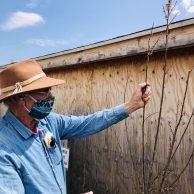 Don’t be in a hurry to prune dead branches on woody plants this spring! Last fall we had warm weather followed by a fast-deep freeze, and this spring we had an 11-degree freeze after some leaves were out. Some branches and some whole shrubs may have died, but most will put out new leaves. So, it is best to wait another couple of weeks before pruning.
Don’t be in a hurry to prune dead branches on woody plants this spring! Last fall we had warm weather followed by a fast-deep freeze, and this spring we had an 11-degree freeze after some leaves were out. Some branches and some whole shrubs may have died, but most will put out new leaves. So, it is best to wait another couple of weeks before pruning.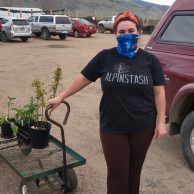 THANK YOU!
THANK YOU!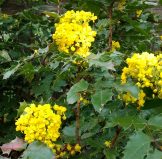 The ancient proverb “March winds and April showers bring forth May flowers” could be revised for Colorado as “March and April heavy snow, freezing temps, and strong winds bring forth May flowers”! And this year was no exception. Two recent cold snaps with temperatures reaching lows of 3 degrees F in our neighborhood, snows up to 36” in the foothills, and winds that will bring down any weak tree branches, wreaked havoc and impacted flower and fruit productivity. So now it’s time to help support our shrubs and trees to recover.
The ancient proverb “March winds and April showers bring forth May flowers” could be revised for Colorado as “March and April heavy snow, freezing temps, and strong winds bring forth May flowers”! And this year was no exception. Two recent cold snaps with temperatures reaching lows of 3 degrees F in our neighborhood, snows up to 36” in the foothills, and winds that will bring down any weak tree branches, wreaked havoc and impacted flower and fruit productivity. So now it’s time to help support our shrubs and trees to recover.
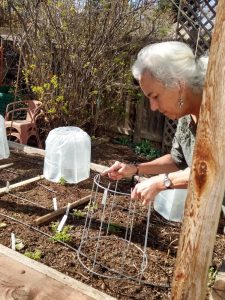 1-Place the wire cage on the desired spot, pressing the legs firmly into the soil so the bottom ring sits on the soil surface.
1-Place the wire cage on the desired spot, pressing the legs firmly into the soil so the bottom ring sits on the soil surface. 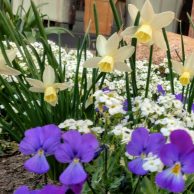 April 22 is Earth Day, originally planned to bring a billion people into the streets to let our leaders know for sure that the health and resilience of our planet and our environment is of the Utmost Importance. Of course, neither a billion nor a dozen people are going to congregate on Earth Day this year.
April 22 is Earth Day, originally planned to bring a billion people into the streets to let our leaders know for sure that the health and resilience of our planet and our environment is of the Utmost Importance. Of course, neither a billion nor a dozen people are going to congregate on Earth Day this year.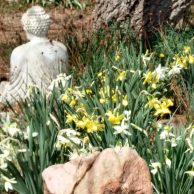
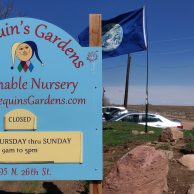 We’re wearing our masks, keeping our distance, disinfecting, etc. It couldn’t be more obvious that we are all connected by the air we breathe in and the biology we breathe out and share through what we touch. It’s not all bad. The microbes in our guts are responsible for helping digest our food and supporting our immune system. Not only that, but 90% of the cells in our bodies are microbe cells, and only 10% are human cells. Kinda makes ya think.
We’re wearing our masks, keeping our distance, disinfecting, etc. It couldn’t be more obvious that we are all connected by the air we breathe in and the biology we breathe out and share through what we touch. It’s not all bad. The microbes in our guts are responsible for helping digest our food and supporting our immune system. Not only that, but 90% of the cells in our bodies are microbe cells, and only 10% are human cells. Kinda makes ya think.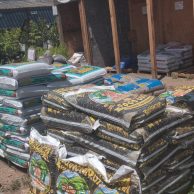 It wasn’t too long ago when Harlequin’s Gardens only accepted cash (and we would extend credit to those customers who didn’t have cash with them). And now here we are, only accepting credit cards to help minimize contact and maximize social distancing. (Thankfully we had set-up our credit card system a few years ago.) We’re continuing to evolve by introducing
It wasn’t too long ago when Harlequin’s Gardens only accepted cash (and we would extend credit to those customers who didn’t have cash with them). And now here we are, only accepting credit cards to help minimize contact and maximize social distancing. (Thankfully we had set-up our credit card system a few years ago.) We’re continuing to evolve by introducing 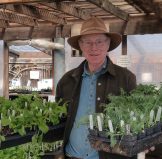
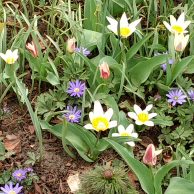 A couple of days ago, I decided to trim back the clumps of Narbonne Flax in my garden, which had been bent over by the heavy snow in March. I grabbed my hedge clippers and cut the first clump down to about 8”. Then I took a closer look at it. Something was in there, and it wasn’t a wad of dry redbud leaves. I had just missed cutting through a Praying Mantis egg case by about a quarter of an inch! A little shaken and much relieved, I inspected all the other clumps carefully before trimming the rest.
A couple of days ago, I decided to trim back the clumps of Narbonne Flax in my garden, which had been bent over by the heavy snow in March. I grabbed my hedge clippers and cut the first clump down to about 8”. Then I took a closer look at it. Something was in there, and it wasn’t a wad of dry redbud leaves. I had just missed cutting through a Praying Mantis egg case by about a quarter of an inch! A little shaken and much relieved, I inspected all the other clumps carefully before trimming the rest. At Harlequin’s Gardens we always knew that nurseries in Colorado are seasonal, but our commitment to local, sustainable, high quality, beautiful, delightful, unusual and innovative is eternal. One of our owners, Eve Reshetnik Brawner, also happened to be a multi genre artist with artisan friends making amazing items without enough ways to sell them. So nine years ago we germinated the idea of a Holiday Gift Market that would not only provide our cherished customers with items that reflected the reputation we’ve tended with our outstanding nursery stock and sustainable garden center items, but would also keep our dedicated and amazing staff working in the off-season.
At Harlequin’s Gardens we always knew that nurseries in Colorado are seasonal, but our commitment to local, sustainable, high quality, beautiful, delightful, unusual and innovative is eternal. One of our owners, Eve Reshetnik Brawner, also happened to be a multi genre artist with artisan friends making amazing items without enough ways to sell them. So nine years ago we germinated the idea of a Holiday Gift Market that would not only provide our cherished customers with items that reflected the reputation we’ve tended with our outstanding nursery stock and sustainable garden center items, but would also keep our dedicated and amazing staff working in the off-season.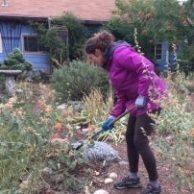 It’s the time of year to ready our gardens for the upcoming fallow winter season and prepare for next year’s growth. We do this knowing that regeneration will be occurring in our soil, with the microbes and with overwintering insects. Here are tips for you to best help this process take place, while still having an aesthetically pleasing garden.
It’s the time of year to ready our gardens for the upcoming fallow winter season and prepare for next year’s growth. We do this knowing that regeneration will be occurring in our soil, with the microbes and with overwintering insects. Here are tips for you to best help this process take place, while still having an aesthetically pleasing garden. 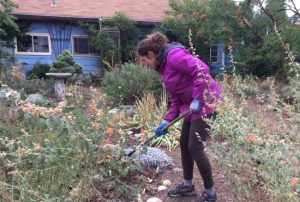
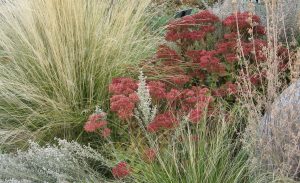
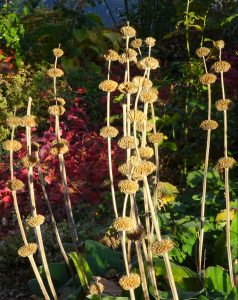
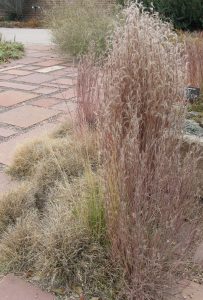 Unless you have an ‘ornamental’ grass that self-sows aggressively, leave grasses and their seedheads standing. If they are ‘cool-season’ grasses, you’ll want to leave them until about mid-February, then cut them to 3” above the ground so they can begin making unimpeded new growth as soon as the soil thaws. Dormant ‘warm-season’ grasses can remain attractive until warm weather comes and don’t need to be cut down until April.
Unless you have an ‘ornamental’ grass that self-sows aggressively, leave grasses and their seedheads standing. If they are ‘cool-season’ grasses, you’ll want to leave them until about mid-February, then cut them to 3” above the ground so they can begin making unimpeded new growth as soon as the soil thaws. Dormant ‘warm-season’ grasses can remain attractive until warm weather comes and don’t need to be cut down until April.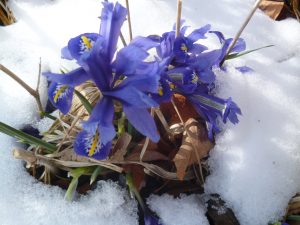
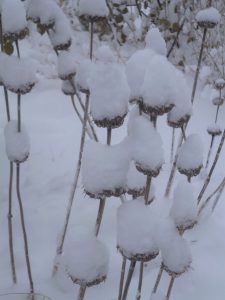
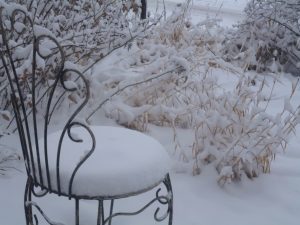
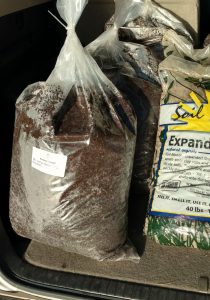 At Harlequin’s Gardens we will not be leaving our jobs on September 20. Instead we will be at work for Harlequin’s where we are always working to help you and the planet. AND we will be giving away one Free bag of compost with each purchase, on Friday, the 20th.
At Harlequin’s Gardens we will not be leaving our jobs on September 20. Instead we will be at work for Harlequin’s where we are always working to help you and the planet. AND we will be giving away one Free bag of compost with each purchase, on Friday, the 20th.
 Non-toxic Herbicides
Non-toxic Herbicides This year’s Taste of Tomato was a blast! We love the new location at Growing Gardens’ Barn, with its’ beautiful view of the Flatirons, easy access, and wonderful staff. The tasting featured 44 different varieties of tomatoes, with Aunt Ruby’s German Green winning the greatest number of votes. Participants brought in some wonderful new varieties this year, including Brad’s Atomic Grape, Thornburn’s Terracotta, and Indigo Cherry. Look for the most popular varieties from this year and previous years when you come to buy your organic tomato starts next spring at Harlequin’s Gardens. Every year we grow 80+ great varieties for all kinds of uses and growing conditions!
This year’s Taste of Tomato was a blast! We love the new location at Growing Gardens’ Barn, with its’ beautiful view of the Flatirons, easy access, and wonderful staff. The tasting featured 44 different varieties of tomatoes, with Aunt Ruby’s German Green winning the greatest number of votes. Participants brought in some wonderful new varieties this year, including Brad’s Atomic Grape, Thornburn’s Terracotta, and Indigo Cherry. Look for the most popular varieties from this year and previous years when you come to buy your organic tomato starts next spring at Harlequin’s Gardens. Every year we grow 80+ great varieties for all kinds of uses and growing conditions!